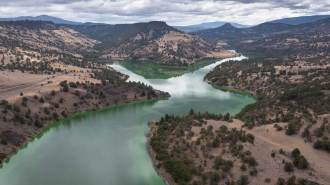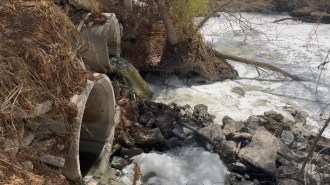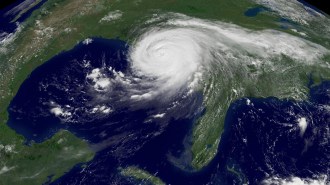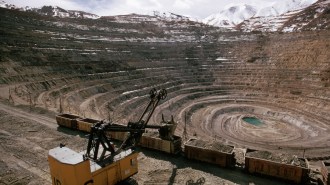When coal replaces a cleaner energy source, health is on the line
Tennessee Valley case study links higher air pollution to lower birth-weight babies
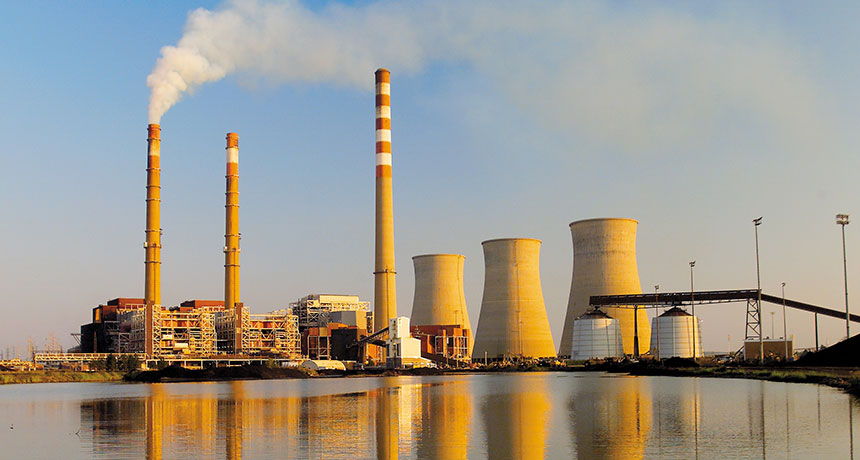
COAL’S COST In response to nuclear power plant shutdowns, Kentucky’s coal-fired Paradise Fossil Plant (shown) began producing more power, and more air pollution. Babies born nearby were smaller, an indicator of poorer health, a study finds.
Tennessee Valley Authority/Flickr (CC BY 2.0)
- More than 2 years ago
Where I grew up in Tennessee, a coal-fired power plant perches by the river, just down from the bridge that my wild brothers and their friends would jump off in the summer. Despite the proximity, I never thought too much about the power plant and the energy it was churning out.
But then I read an April 3 Nature Energy paper on coal-fired energy production that used my town — and others in the Tennessee Valley Authority area — as a natural experiment. The story the data tell is simultaneously fascinating and frustrating, and arrives at a politically prescient time. In recent weeks, the Trump administration has signaled a shift in energy policy back toward the fossil fuel.
The roots of this story were planted in the 1930s, when the TVA was created as a New Deal project to help haul America out of the Great Depression. The organization soon got into the power business, relying on a mix of energy sources: hydropower, coal and nuclear. After the 1979 accident at Three Mile Island — a nuclear power plant in Pennsylvania — stricter regulations driven by public fear prompted TVA to shut down its two nuclear reactors. Those temporary closures in 1985 left a gaping hole in the region’s energy production, a need immediately filled by coal.
Economist Edson Severnini realized that this dramatic shift from nuclear to coal offered a chance to study the effects of coal-fired power on health. He analyzed power production, particle pollution and medical records of babies born near coal plants. One in particular picked up the most slack: Paradise Fossil Plant in Paradise, Ky. (Incidentally, that town is the same coal-ravaged one John Prine sings about in arguably the best song ever written.) The plant’s power production increased by about 27 percent, replacing about a quarter of the missing nuclear energy.
Not surprisingly, air pollution near the Paradise plant rose, Severnini found. The levels of an air pollution indicator called total suspended particulate fell below the Environmental Protection Agency’s limit at the time (but wouldn’t have passed today’s tougher standards, Severnini says). Still, babies born near the plant in the 18 months after the nuclear shutdowns in 1985 were about 5 percent smaller than babies born in the 18 months before. No difference in birth weight showed up in babies born near other power plants that didn’t change their output (including my town’s).
Story continues below map
Shifting power
After two nuclear reactors in Tennessee were temporarily shut down in the 1980s, coal-fired power plants picked up various amounts of the slack. Babies born near the Paradise Fossil Plant (red diamond), which saw the biggest increase in production, tended to be born smaller after the shift.
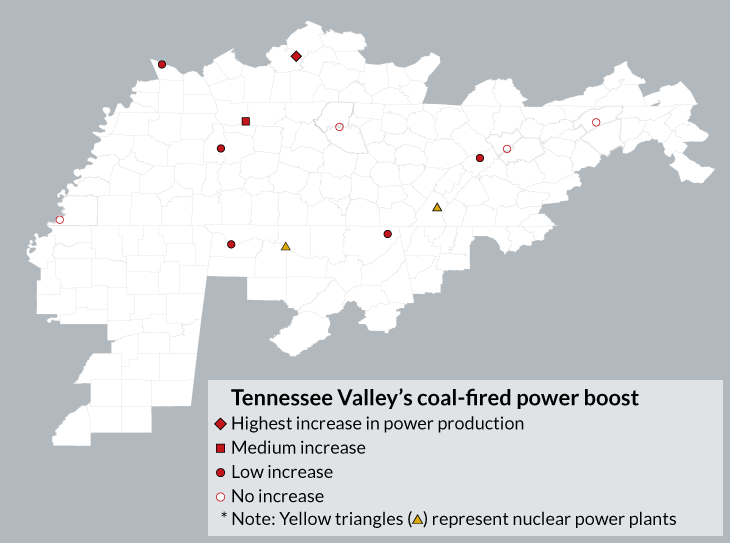
That 5 percent difference was “really, really surprising,” says Severnini, of Carnegie Mellon University in Pittsburgh. Studies have linked low birth weight to trouble later in life, including a lower IQ, lower earnings and health problems, particularly heart disease.
UCLA environmental epidemiologist Beate Ritz puts that 5 percent drop in context. “These coal-fired power plants coming online can be compared with a pregnant woman smoking one pack of cigarettes a day,” she says. “That’s pretty bad.”
Ritz, who studies the hazards of air pollution in Los Angeles, points out that it’s not just the lowest birth weight babies affected. The whole curve of birth weights shifted, so that in all likelihood, most babies born there were impacted in some way. “There’s only a small percent in the upper end of the curve that is unaffected,” she says. “Everybody else has probably some kind of subtle effect that you can’t measure on their brain development, on their lung development, on their immune system.”
The study compares nuclear energy to coal. But the issue is far more complex than that, Severnini says. He hopes the example he found will serve as a reminder of how all energy decisions come with complex trade-offs. “Any energy production choice we make has costs and benefits, and we need to weigh them fully.”
The TVA case study fits with many other examples of how coal pollution can harm health, says Bernard Goldstein, a physician and environmental public health expert at University of Pittsburgh. “We should get rid of particulates, and coal contributes to that,” he says.
U.S. dependence on coal is ebbing, in part because natural gas is cheap right now. But coal isn’t dead yet. “My administration is putting an end to the war on coal,” President Donald Trump said March 28, before he signed an executive order that lifted the ban on coal leases on federal land. He also aims to lift other restrictions that affect the coal industry. It’s not yet clear how — or whether —those policies will be enacted, or whether they’ll be enough to revive the coal industry. (Tellingly, the Paradise plant plans to shut down two of its three coal-burning units as it shifts to natural gas.)
“If the president gets his way, this would slow [coal’s descent] down,” says Goldstein, who coauthored a March 23 New England Journal of Medicine opinion piece on why the Trump administration should pay attention to environmental science. Goldstein likens the situation to government efforts to discourage teenage smoking, a trend that’s also decreasing. Just because the numbers are already falling doesn’t mean we shouldn’t hasten that drop, he says.
And unlike exposure to other pollutants like cigarette smoke, air isn’t optional. “You don’t have a choice,” Ritz notes. We are all breathing the air that’s around us, whether we are in Paradise or not.


